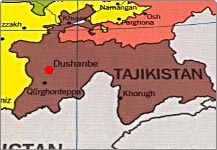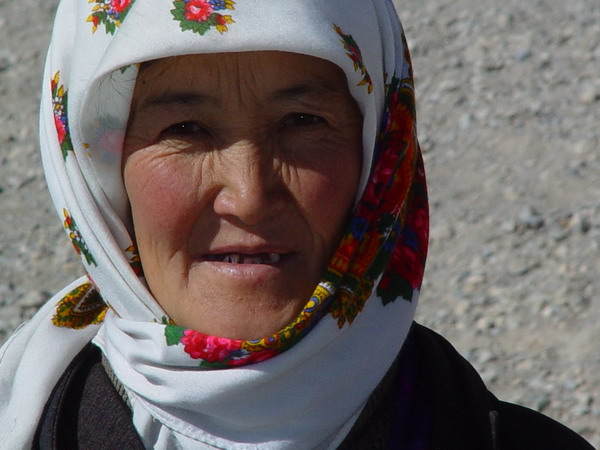Hissar fortress
30 km away from Dushanbe and only 4 km from Hissar village there is one of the main Tajikistan monuments - Hissar historical reserve. It includes:
- Hissar fort with ark built in XVI c and now reconstructed.
- Registan - a square before fortress.
- Old madrassah built in XVI c on the territory of 2250 sq m.
- New madrassah.
- Caravan Serai built in 1808.
- Mosque "Sangin"
- Mausoleum of Mahdumi Abzam built in XVI c over the grave of Khodja Muhhamad Haivoki.
- History museum located in Old Madrassah building and has a display of 3200 exhibits.
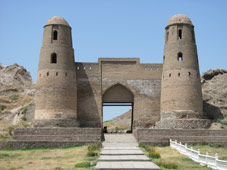 | Hissar fortress is the ex residence of Bek - a deputy of Bukhara emir. The fortress walls were 1 meter thick and had gun slots for rifles and cannons. Inside of the fort was garden and water pool. Stairs and brick terraces were lead to the main entrance but unfortunately they were lost with time as well as the palace building. The only part that remains till our days is monumental gates built of burnt bricks with |
two cylinder towers and lancet arch between them. This type of architecture is typical for most of Bukhara buildings built within XVIII-XIX cc.
| But even this small part of the fortress looks great and impressive. There are several legends connected with Hissar fortress, and one of them claim that the fort was built by Afrosiab to defend from Rustam (both are heroes of Shahname written by Ferdowsi in 1000 AD) another says that caliph Ali arrived in the area promoting Islam to local population on his horse Dul-Dul. He stopped on the hill west of Hissar and known in our days as Poi Dul Dul. Pretending to be acrobat rope walker he made it to the fort where he was recognized and prizoned. Ali then called his horse | 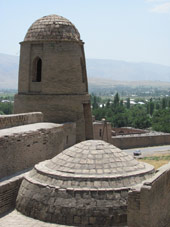 |
Across the gates was marketplace with caravanserai and numerous shops. Another buildings around square include old madrassah built in XVII, new madrassah buit in XVIII-XIX cc and mausoleum of XVI c.
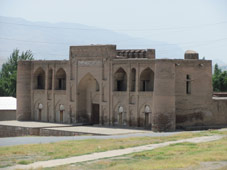 | Both Madrassahs are built of brick and topped with domes. Inside is a wide area with cells built along the inner walls. In the beginning of XX century madrassahs host about 150 students and were closed by 1921. In old madrassah still remain the library premises. New madrassah building is know has only two store facade that still overlook the square while the rest of the building was destroied. |
Next to Old madrassah is mausoleum of Mahdumi Azam built in XVI v. Mahdumi Azam is Persian for The greatest master and is probably the nick name rather than a real name. There are several places in Central Asia connected with that name and it is still aquestion who is indeed buried in Hissar. Some sources say it could be Khodja Muhhamed Haivoki.
Another notable construction is "Hishtin" Caravan Serai, built in XVII cc. Hishtin is Persian for "built of brick". By XX century there were only remnants of foundation and some wall sections of 1 m high and only a single photo taken in 1913 helped to restore it.
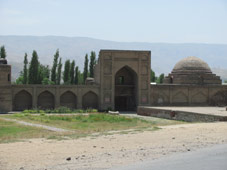 | Sangin mosque or Stone mosque - Sangin is Persian for stone and the mosque's walls of up to the half of it's height indeed were built of stone in XII c. The unique feature of the building are 4 resonators immured into the inner space of the pre dome constructions made of 4 jugs without bottoms and served to improve room's acoustics where praying and sermons were read. |
Home | Travel Basics | Tours | Visa&Formalities | Must See | FAQ's
| About us





 Little Pamir 22 day
Little Pamir 22 day

